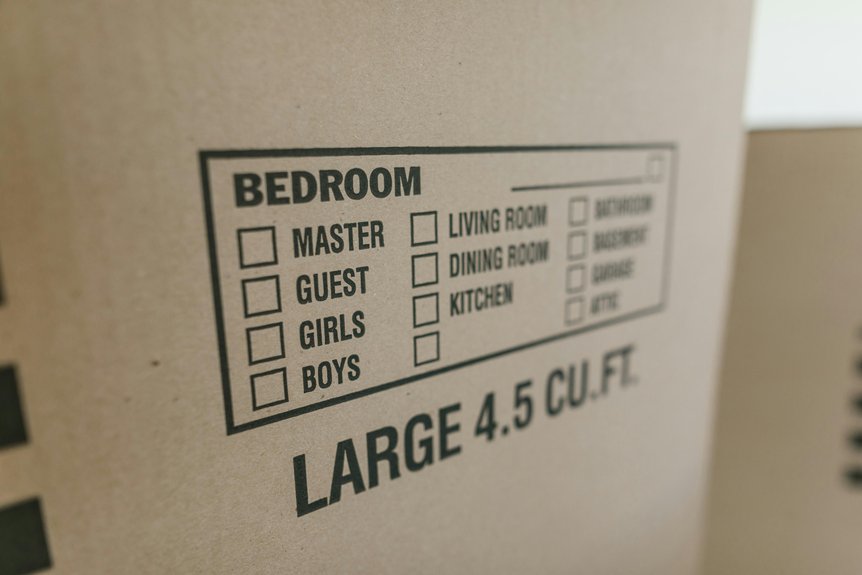If you’re a homeowner in Minot, waterproofing your basement is essential for maintaining the integrity of your property. Moisture issues can lead to serious damage, including mold growth and structural concerns. Start by evaluating your basement’s current condition and identifying any signs of trouble. Understanding the specific waterproofing methods suitable for your situation is critical. Let’s explore how to effectively prepare your basement and apply the right solutions.
Key Takeaways
- Inspect your basement for water damage, mold, and drainage issues to identify potential waterproofing needs.
- Choose appropriate waterproofing methods based on your basement’s specific moisture challenges and construction type.
- Prepare the space by clearing clutter, sealing cracks, and ensuring proper drainage around the foundation.
- Install chosen waterproofing solutions, such as sealants or sump pumps, to effectively combat moisture.
- Maintain your waterproofed basement by conducting regular inspections and monitoring humidity levels to prevent future issues.
Understanding the Importance of Basement Waterproofing
When you consider the long-term health of your home, understanding the importance of basement waterproofing becomes vital.
The benefits of waterproofing extend beyond preventing water damage; it enhances air quality, prevents mold growth, and increases your property’s value.
Many homeowners fall prey to common misconceptions, believing that waterproofing is unnecessary if they don’t see visible leaks.
However, even minor moisture can lead to significant structural issues over time.
Assessing Your Basement’s Current Condition
To effectively assess your basement’s current condition, start by inspecting for any signs of water damage, such as stains or warped surfaces.
Next, check for mold growth, which can indicate excess moisture and pose health risks.
Finally, evaluate your drainage systems to guarantee they’re functioning properly and directing water away from your foundation.
Inspect for Water Damage
Many homeowners overlook the signs of water damage in their basements, but a thorough inspection is essential for maintaining a dry and healthy space.
Start by examining walls, floors, and corners for discoloration, peeling paint, or dampness. These water damage signs indicate potential problems.
Pay attention to water stains or mold growth, as these often signal leaks or humidity issues.
Also, check for cracks in the foundation, which are common water damage causes.
Don’t forget to inspect around windows and doors for any gaps where moisture can seep in.
Addressing these issues early can save you from costly repairs later.
Check for Mold Growth
How can you guarantee your basement remains a safe and healthy environment? Start by checking for mold growth, as it can severely impact indoor air quality.
Inspect corners, walls, and any damp areas for discoloration or musty odors. Use mold prevention techniques, like ensuring proper ventilation and controlling humidity levels, to mitigate potential issues.
If you spot mold, address it immediately with appropriate cleaning solutions or seek professional help. Regularly monitor your basement for signs of moisture and act swiftly to maintain a mold-free environment.
Protect your home and health by staying proactive in mold prevention.
Evaluate Drainage Systems
What methods are you using to evaluate your basement’s drainage systems?
Start by inspecting the gutters and downspouts for blockages and guarantee they direct water away from your foundation.
Next, assess the grading around your home; it should slope away to facilitate proper water flow.
Examine any existing sump pumps to confirm they’re operational and properly installed.
Additionally, check for any signs of standing water or leaks, as these indicate drainage issues.
Finally, consider using a drainage system inspection camera to identify hidden problems in underground pipes.
Addressing these elements helps you guarantee effective water management in your basement.
Choosing the Right Waterproofing Methods
While selecting the right waterproofing methods for your basement, it’s essential to take into account factors like the specific moisture challenges your space faces and the type of construction.
Evaluate advanced waterproofing technology options, such as liquid membranes or exterior drainage systems, to effectively counteract water intrusion.
Explore innovative waterproofing technologies like liquid membranes and exterior drainage systems to combat water intrusion effectively.
Consider using interior solutions like sealants or sump pumps, particularly if you’re dealing with minor leaks.
Additionally, guarantee proper basement insulation to maintain temperature control and prevent condensation.
Tailor your approach based on the unique characteristics of your basement to guarantee a long-lasting, effective waterproofing solution that protects your home.
Preparing Your Basement for Waterproofing
Before you begin the waterproofing process, preparing your basement is an essential step that can greatly influence the effectiveness of your chosen methods.
Focus on these key areas for basement organization and moisture control:
- Clear out all clutter and unnecessary items.
- Inspect for any signs of leaks or water damage.
- Confirm proper drainage by checking gutters and downspouts.
- Seal cracks in walls and floors to prevent moisture entry.
- Create a moisture barrier using plastic sheeting if needed.
Taking these steps will set a solid foundation for successful waterproofing, guaranteeing your home stays dry and protected in the long run.
Applying Waterproofing Solutions
Before you apply any waterproofing solutions, make certain your surface is properly prepared.
This involves cleaning, patching, and drying the walls and floor to create an ideal bond.
Once that’s done, you’ll need to select the right waterproofing products tailored to your specific basement conditions.
Surface Preparation Techniques
To achieve effective waterproofing in your basement, proper surface preparation is essential, as it directly impacts the adhesion and performance of the applied solutions.
Start with thorough surface cleaning to remove dirt, dust, and mold. Next, focus on crack sealing to prevent water intrusion.
Here are key steps to follow:
- Inspect for cracks and damage
- Clean surfaces with a pressure washer or scrub brush
- Fill and seal any cracks with appropriate sealant
- Allow surfaces to dry completely before applying solutions
- Guarantee a smooth, even surface for peak adhesion
These steps will set the foundation for successful waterproofing.
Selecting Waterproofing Products
When it comes to selecting waterproofing products, understanding the specific needs of your basement is essential for achieving lasting results. You’ll find various product types tailored for different conditions, such as sealants, membranes, and coatings. Evaluating application techniques like brush-on, spray, or roll-on methods can notably impact performance.
| Product Type | Application Technique | Key Benefits |
|---|---|---|
| Sealants | Brush-on | Fills cracks, easy to use |
| Membranes | Roll-on | Provides a barrier, durable |
| Coatings | Spray | Quick application, flexible |
| Drainage Systems | Installation | Redirects water, prevents flooding |
Maintaining Your Waterproofed Basement
Although you’ve successfully waterproofed your basement, ongoing maintenance is essential to confirm it remains dry and protected from future water intrusion.
Ongoing maintenance is vital to keep your waterproofed basement dry and safe from future water issues.
Regular post waterproofing maintenance guarantees effective basement humidity control and early detection of potential issues.
Here are key tasks to keep in mind:
- Inspect and clean gutters and downspouts
- Check for cracks in walls or floors and seal them
- Monitor humidity levels with a hygrometer
- Test sump pump functionality regularly
- Ensure proper landscaping to divert water away
Conclusion
By following this step-by-step guide, you can effectively waterproof your basement in Minot and protect your home from moisture damage. Regular assessments and maintenance will guarantee your efforts remain effective over time. Remember, it’s not just about applying waterproofing solutions; it’s also about proper drainage and humidity control. Stay proactive in monitoring your basement’s condition, and you’ll create a dry, safe environment that enhances your home’s longevity and value.

